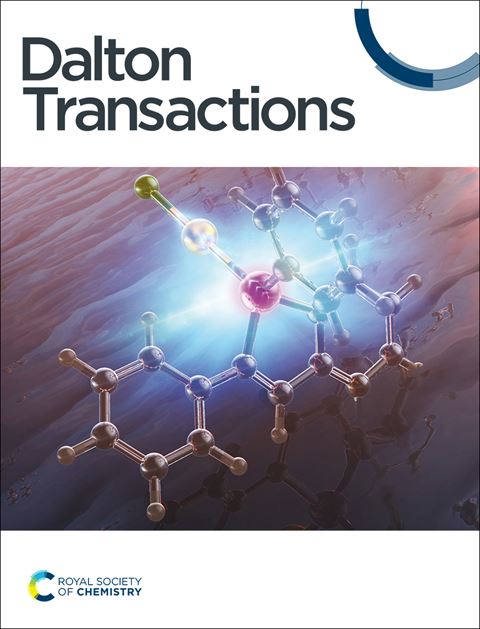Fe and Cu co-doping induces abundant oxygen vacancies in MnO2 for efficient ozone catalytic oxidation of toluene at room temperature
IF 3.5
3区 化学
Q2 CHEMISTRY, INORGANIC & NUCLEAR
引用次数: 0
Abstract
MnO2 holds significant potential for room-temperature ozone catalytic oxidation of volatile organic compounds (VOCs), yet it encounters challenges related to low degradation efficiency. This study introduces a co-doping strategy aimed at enhancing the catalytic activity and stability of MnO2. Specifically, Mn4+ ions were substituted with low-valence copper and iron dopants via a straightforward one-step hydrothermal method, resulting in the formation of abundant oxygen vacancies on the catalyst surface through driven redox precipitation. The resultant Fe–Cu–MnO2 catalyst exhibited remarkable catalytic performance at room temperature, achieving 100% toluene degradation and 100% ozone removal efficiency, along with an impressive mineralization ratio of 81.2% and sustained stability over 100 hours. Relevant experiments demonstrated that the improvement in catalytic activity was primarily attributed to the significant increase in oxygen vacancy concentration induced by co-doping. This was accompanied by increased surface oxygen adsorption and enhanced low-temperature reducibility, which facilitated the generation of reactive oxygen species. Additionally, co-doping induced crystal morphology changes and specific surface area expansion contribute to exposing more active sites, thereby enhancing catalytic performance. Consequently, the catalyst exhibited superior ozone catalytic oxidation performance for toluene degradation. In situ DRIFTS analysis further elucidated the degradation pathway and reaction mechanism of ozone catalytic oxidation of toluene. These findings may provide valuable insights for the development of efficient catalysts for low-temperature catalytic ozonation of VOCs.

Fe和Cu共掺杂在MnO2中产生丰富的氧空位,用于室温下臭氧催化甲苯的高效氧化
二氧化锰在室温臭氧催化氧化挥发性有机化合物(VOCs)方面具有巨大的潜力,但它面临着降解效率低的挑战。本研究介绍了一种旨在提高二氧化锰催化活性和稳定性的共掺杂策略。具体而言,通过简单的一步水热法将Mn4+离子替换为低价铜和铁掺杂剂,通过驱动氧化还原沉淀在催化剂表面形成丰富的氧空位。合成的Fe-Cu-MnO2催化剂在室温下表现出优异的催化性能,达到100%的甲苯降解和100%的臭氧去除效率,矿化率达到81.2%,持续稳定性超过100小时。相关实验表明,催化活性的提高主要是由于共掺杂导致氧空位浓度的显著增加。这伴随着表面氧吸附的增加和低温还原性的增强,从而促进了活性氧的产生。此外,共掺杂引起的晶体形态变化和比表面积的扩大有助于暴露更多的活性位点,从而提高催化性能。结果表明,该催化剂具有良好的臭氧催化氧化甲苯降解性能。原位漂移分析进一步阐明了臭氧催化氧化甲苯的降解途径和反应机理。这些发现可能为开发高效的低温臭氧氧化VOCs催化剂提供有价值的见解。
本文章由计算机程序翻译,如有差异,请以英文原文为准。
求助全文
约1分钟内获得全文
求助全文
来源期刊

Dalton Transactions
化学-无机化学与核化学
CiteScore
6.60
自引率
7.50%
发文量
1832
审稿时长
1.5 months
期刊介绍:
Dalton Transactions is a journal for all areas of inorganic chemistry, which encompasses the organometallic, bioinorganic and materials chemistry of the elements, with applications including synthesis, catalysis, energy conversion/storage, electrical devices and medicine. Dalton Transactions welcomes high-quality, original submissions in all of these areas and more, where the advancement of knowledge in inorganic chemistry is significant.
 求助内容:
求助内容: 应助结果提醒方式:
应助结果提醒方式:


